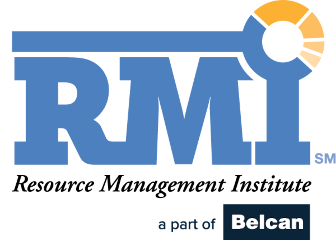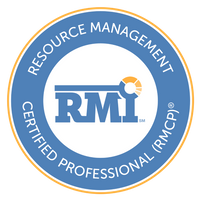Today’s professional services organizations depend on more than just the employees that make up their full-time workforce. More than ever, contract work plays a crucial role in not just accessing highly specialized skills that aren’t part of the regular team, but also providing regular work that keeps companies moving forward every day.
Recent research from Kantata looking at the changing dynamics of the modern workforce reveals that 76% of independent contractors surveyed were full-time employees just one year ago, and 43% of full-time employees are considering leaving their jobs to become independent contractors. Some of the best resources out there, with the skills you need to help your clients be successful, are going to be independent contractors.
However, it takes a lot of time and energy to establish and maintain working relationships not just with the full-time employees that are the bedrock of your organization but also with the contract workers and freelancers that can choose to not work for you whenever they want.
This is where the creation and maintenance of an extended talent network comes in. By understanding the elements of a talent network, and how you can use it to your advantage, your professional services organization can begin making the most of your talent relationships and create a pathway to building even better ones.
What is a Talent Network?
Broadly speaking, a talent network is a professional services organization’s system of professional relationships with the people who do work on behalf of the business, including employees, partners, and contract workers.
As companies grow, gaining and losing full-time employees, and contracting with partners and freelance workers, talent networks form naturally as an informal series of relationships. If your professional services organization has been in existence for at least a few years, you have created a talent network, even if you haven’t referred to it as such. The difficulty arises when the talent network grows to the point where an informal approach no longer works – visibility is lost as partners and contractors are managed exclusively by the teams that have direct relationships with them. Creating a formal process to support your talent network, providing an official means of communication between resources, and putting experienced managers in charge of overseeing the entirety of the network will have many benefits for your organization.
Who Is Included In Your Talent Network?
Any and all people that have come into contact with your business on a working basis can be considered part of your professional services talent network. Each of these resource types will have a different relationship with your organization and as such must be treated differently.
- Full-Time: Full-time employees are the resources for whom you have full access to all schedules, demands, projects, skills, and responsibilities. Leveraging this access to the fullest extent acts as the foundation of your talent network, because it is the easiest variable to understand and manage.
- Part-Time: While part-time employees may still provide a large volume of needed skills and time for your projects, they do have one key differentiator – their schedules don’t align to the full work week. Knowing their set hours and how much time they can provide for you each week will prevent you from accidentally assigning too much work that cannot be done, which could create major delays.
- Contract: Contract workers will only be able to be used for the specific project or projects that you have hired them to work on; however, talent networks create a good working relationship that improves the chances of return work. Ensuring that you have consistent access to the best for-hire work makes a huge difference.
- Candidate: Job candidates are also an important part of your talent network, as they provide the answer to your hiring needs. Keeping track of potential candidates, even when they have applied for past jobs they didn’t get hired for, can make filling a new or vacant position much easier and faster.
- Former: Former employees may not play an active role in your talent network, but having them in your database gives you a greater understanding of your organization. Why did people leave? What important skills did they provide? Could they return in the future? In any case, you shouldn’t forget the people who’ve worked with you in the past.
Having a scalable talent network approach that helps resource managers quickly identify types of resources, communicate efficiently with each, and properly facilitate appropriate communication between these resources will help a business improve the health of their talent relations. The result is a professional services business that can contact, hire, and assign the right resource in as little time as possible.
How Do You Manage a Talent Network?
Having a strong talent network framework includes both the talent acquisition side and project management side of a professional services business. This is where having a dedicated resource management discipline overseeing the entirety of the network will become crucial. A talent network manager will define and enforce the processes for onboarding new talent into the network, help them understand the network, facilitate communication between team members, review the skills that each brings, and match them to the right tasks, including filling up the daily schedules of full-time employees and choosing the right contract workers when needed. In addition, resource managers will work with departments to match candidates with open positions, speeding up the time-to-hire without sacrificing detailed vetting of a potential hire.
Just as important as having the right processes is having the right technology in place to support those processes. A resource management solution that will enable your business to build and maintain an extended talent network should be able to:
- Track the schedules, skills, and availability of not just your full-time resources, but also of part-time resources and contractors.
- Make recommendations for open roles, determining best-fit resources from across your internal and external talent network based on configurable inputs.
- Provide one common project management interface for all members of a project team, both internal and external, eliminating the need for complex workarounds and “contractor only” solutions.
Ensuring your organization has a systematic approach for working with your valued talent – one that levels the playing field for external contributors and is supported by commonly used processes and technology – is crucial to helping businesses thrive in a rapidly evolving industry where contractors are becoming increasingly important to sustainable growth and success.

Charles Gustine is Brand Evangelist at Kantata. He is a product marketing specialist with a learning and development background, applying his experience to help customers find value in the SaaS software they purchase. After eight years of developing training solutions at SumTotal and Kantata, he is applying an educator’s sensibility to product and brand marketing. Charles leverages Kantata’s understanding of the challenges of professional services organizations to create market-leading thought leadership content.




